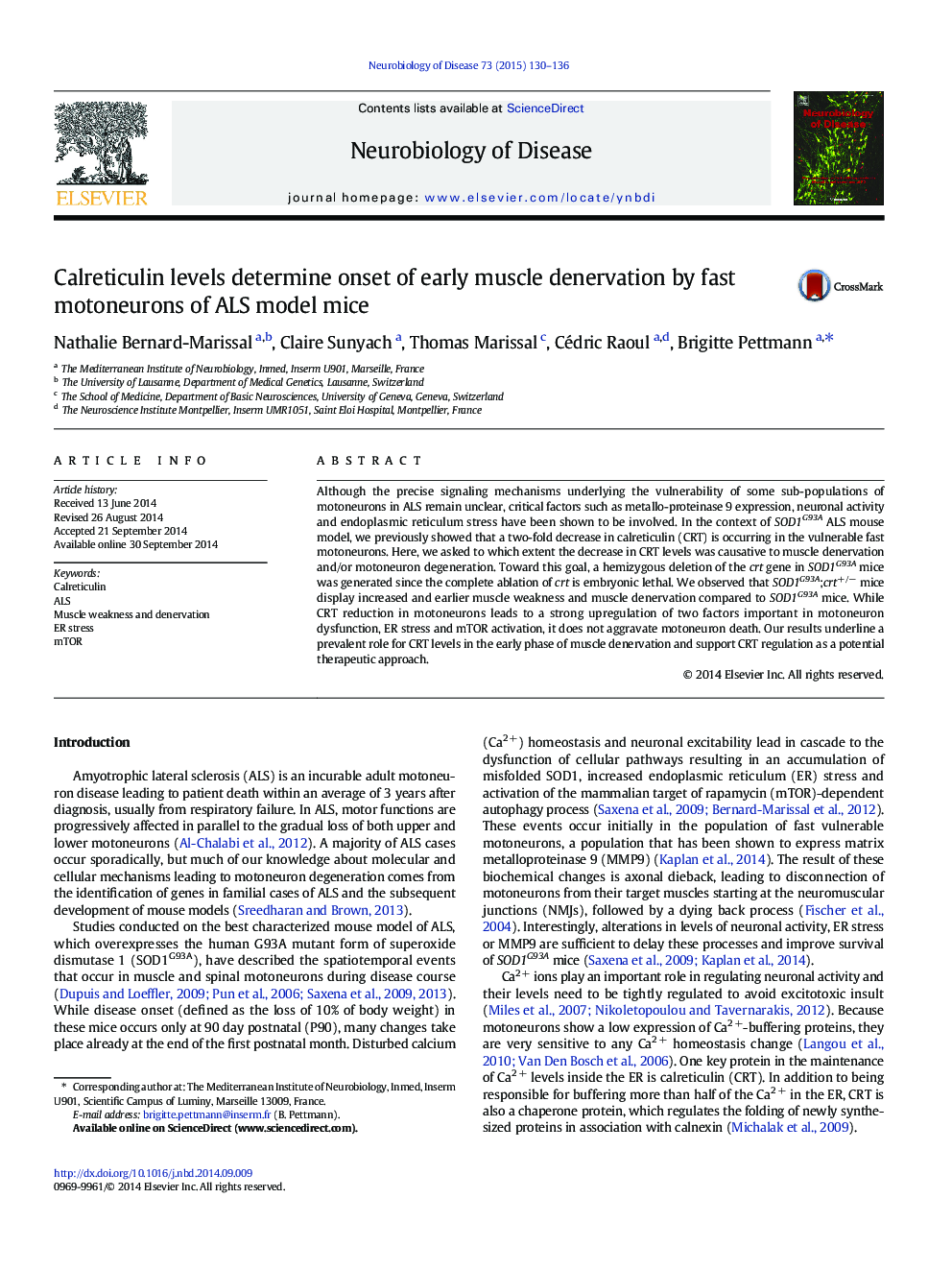| Article ID | Journal | Published Year | Pages | File Type |
|---|---|---|---|---|
| 6021679 | Neurobiology of Disease | 2015 | 7 Pages |
Abstract
Although the precise signaling mechanisms underlying the vulnerability of some sub-populations of motoneurons in ALS remain unclear, critical factors such as metallo-proteinase 9 expression, neuronal activity and endoplasmic reticulum stress have been shown to be involved. In the context of SOD1G93A ALS mouse model, we previously showed that a two-fold decrease in calreticulin (CRT) is occurring in the vulnerable fast motoneurons. Here, we asked to which extent the decrease in CRT levels was causative to muscle denervation and/or motoneuron degeneration. Toward this goal, a hemizygous deletion of the crt gene in SOD1G93A mice was generated since the complete ablation of crt is embryonic lethal. We observed that SOD1G93A;crt+/â mice display increased and earlier muscle weakness and muscle denervation compared to SOD1G93A mice. While CRT reduction in motoneurons leads to a strong upregulation of two factors important in motoneuron dysfunction, ER stress and mTOR activation, it does not aggravate motoneuron death. Our results underline a prevalent role for CRT levels in the early phase of muscle denervation and support CRT regulation as a potential therapeutic approach.
Keywords
Related Topics
Life Sciences
Neuroscience
Neurology
Authors
Nathalie Bernard-Marissal, Claire Sunyach, Thomas Marissal, Cédric Raoul, Brigitte Pettmann,
